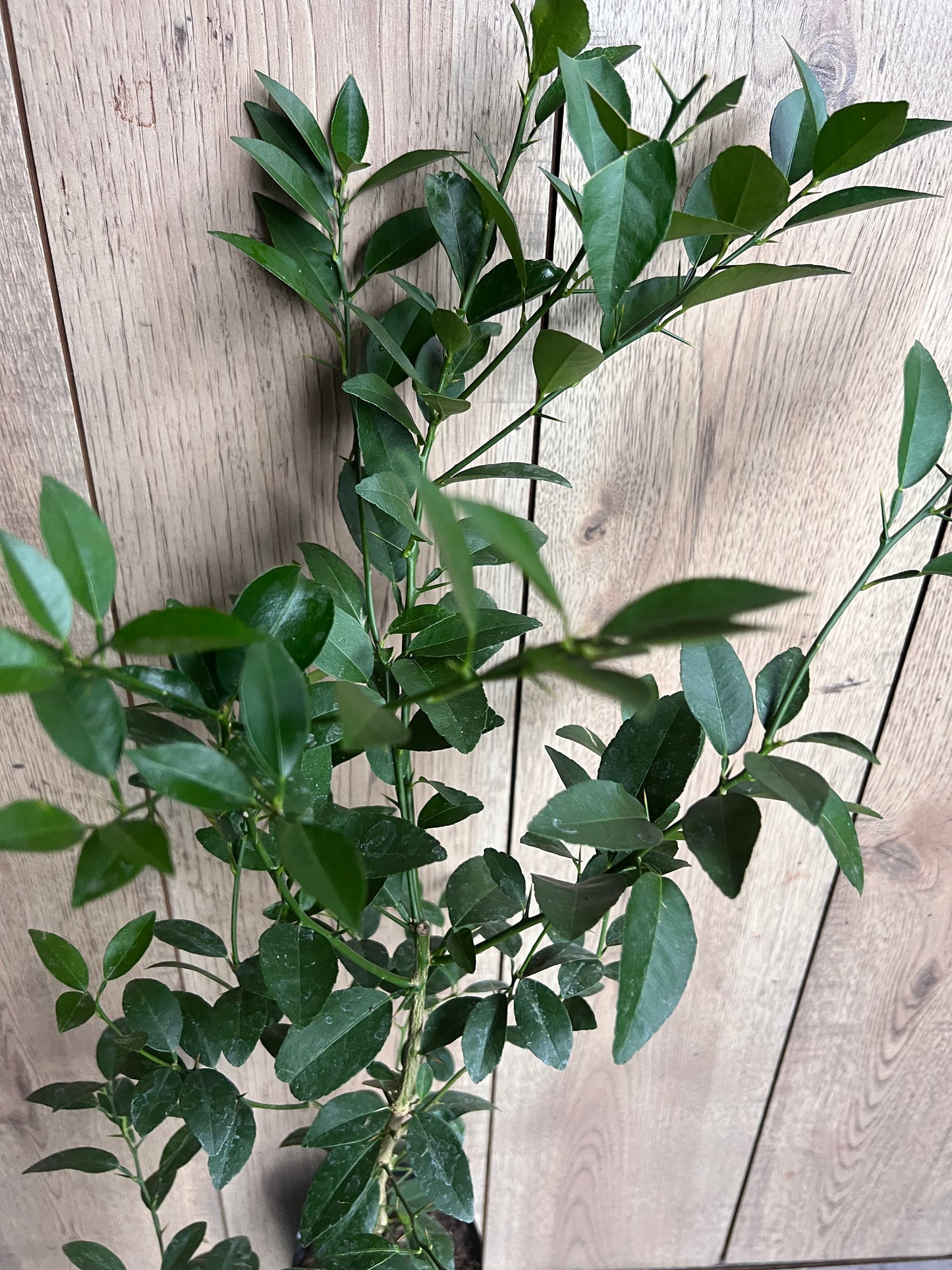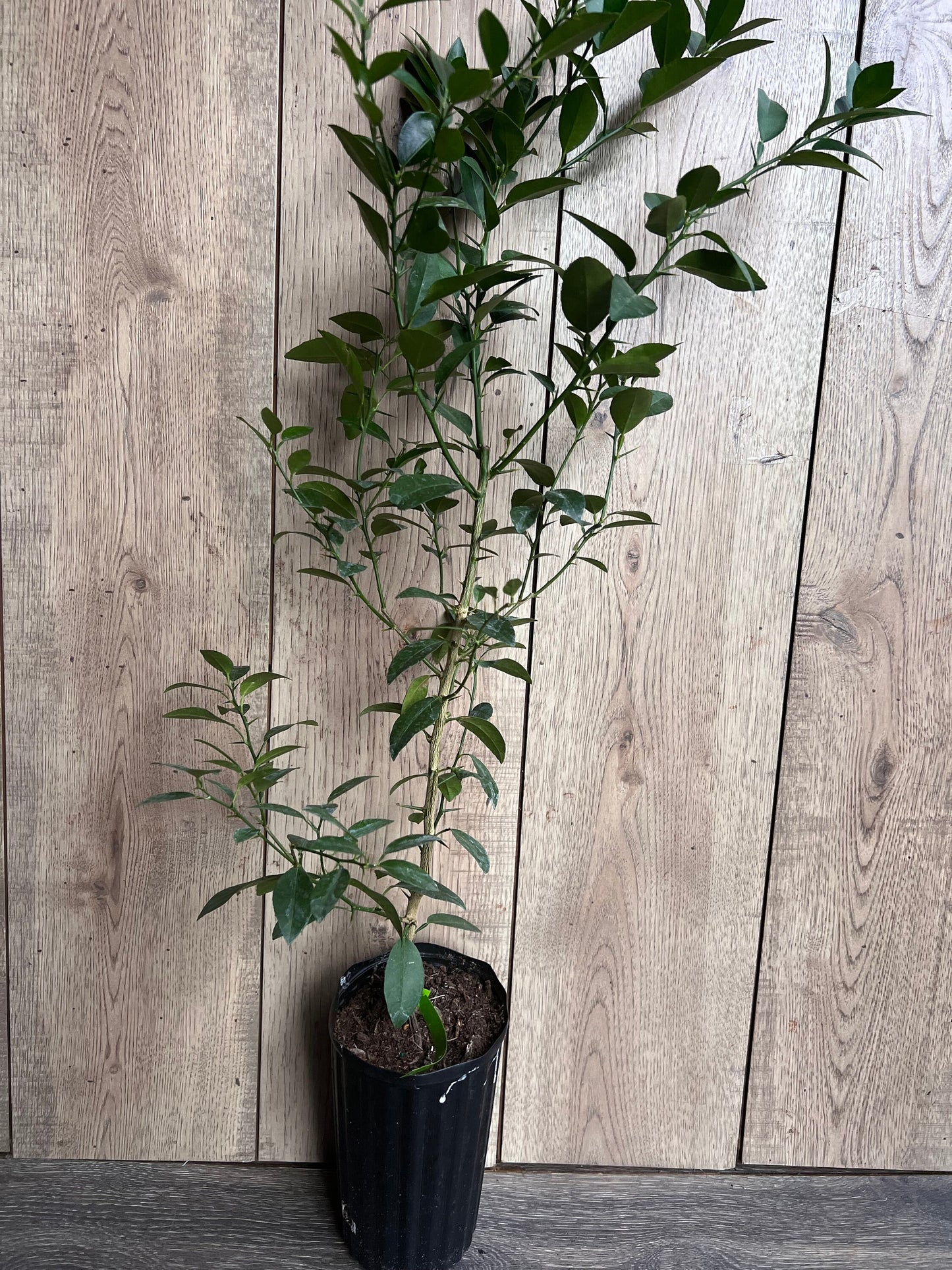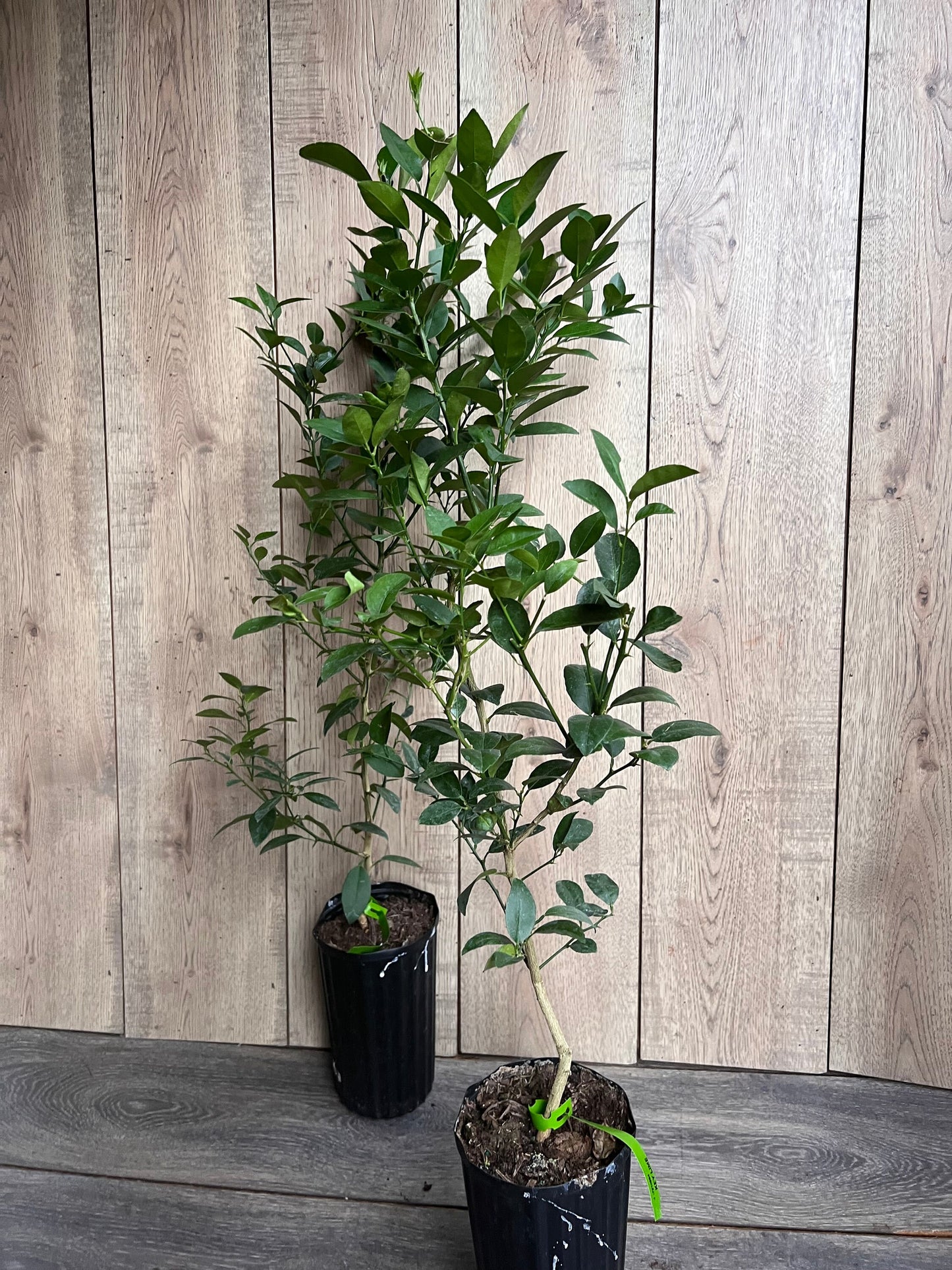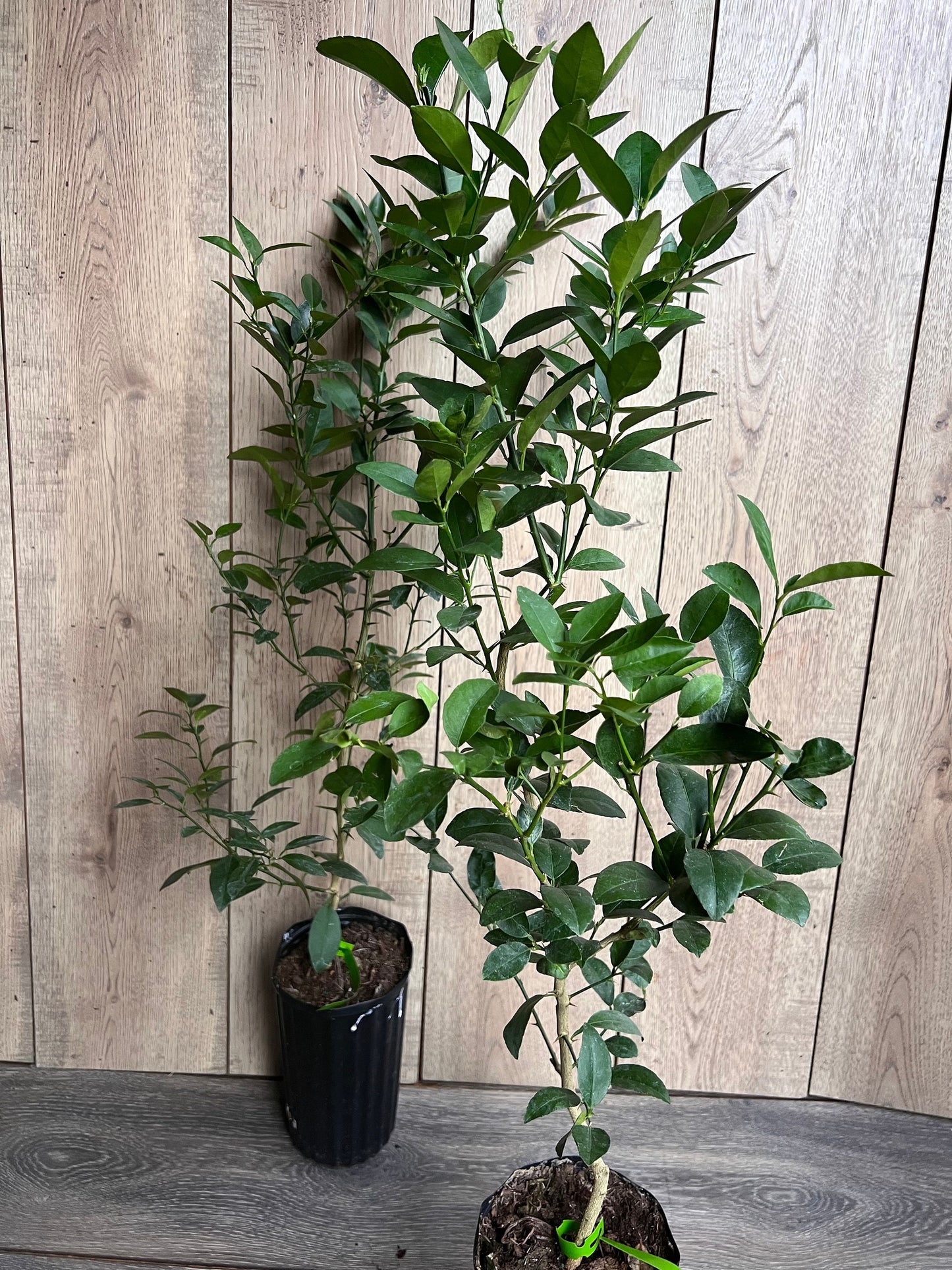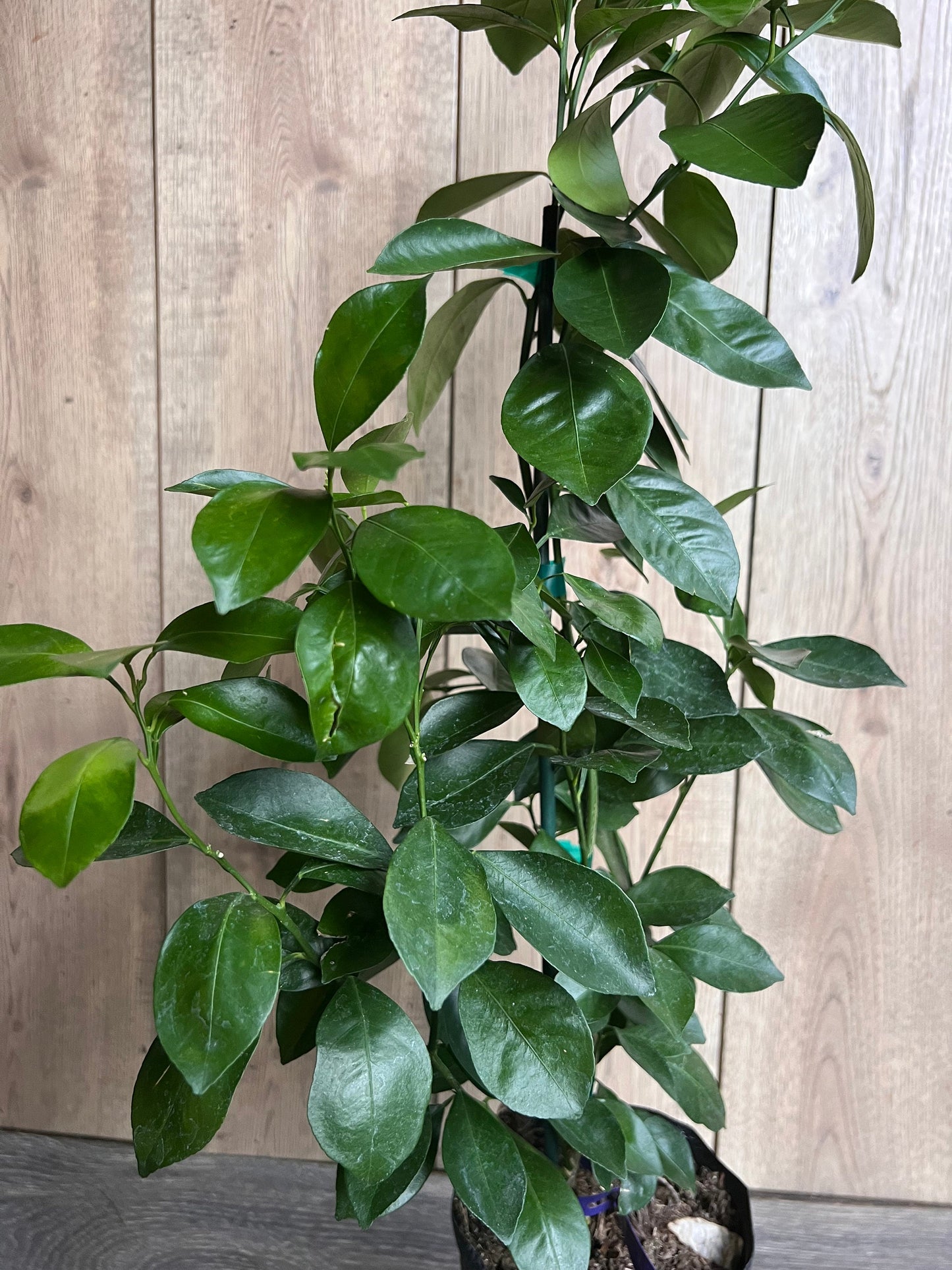1
/
of
8
Key Lime Tree in half Gallon Pot, Grafted, Florida Shipping Only
Key Lime Tree in half Gallon Pot, Grafted, Florida Shipping Only
Regular price
$48.70 USD
Regular price
$64.94 USD
Sale price
$48.70 USD
Unit price
/
per
Shipping calculated at checkout.
Couldn't load pickup availability
Note: You will receive one Key Lime 1/2 Gal pot similar to the pictures
Key Lime (Citrus aurantiifolia) is a small, aromatic citrus variety known for its tart, tangy flavor and vibrant green skin that turns slightly yellow when ripe. Native to the Florida Keys and parts of Mexico, Key limes are smaller than Persian limes, with a thin rind and juicy, fragrant pulp. While the fruit is prized for its intense, slightly acidic taste, it's especially popular in Key lime pie, cocktails, marinades, and dressings. The tree is compact, making it suitable for both garden and container growth in tropical and subtropical climates, where it thrives in full sun and well-draining, slightly acidic soil.
Care Tips for Key Lime Tree:
1. Light Requirements
- Full Sun: Key Lime trees need at least 8-10 hours of direct sunlight daily to thrive and produce fruit. For indoor trees, place them near a south-facing window or use grow lights.
2. Watering
- Moderate Watering: Water when the top 1-2 inches of soil feel dry. During the growing season, water more frequently but let the soil dry slightly between waterings. In winter, reduce watering.
- Well-Draining Soil: Ensure soil is well-draining to prevent root rot. If using a pot, choose one with drainage holes and use a citrus-specific potting mix.
3. Soil Requirements
- Slightly Acidic Soil: Key Lime trees prefer soil with a pH between 5.5 and 6.5. Use loamy, well-draining soil, and amend heavy soils with organic matter.
- Avoid Clay: Avoid heavy clay soils that retain too much moisture, as they can cause root rot.
4. Temperature and Humidity
- Warm Temperatures: Key Lime trees thrive in temperatures between 70°F and 95°F (21°C to 35°C) and are sensitive to frost. In cooler regions, grow in pots to bring indoors during winter.
- Humidity: These trees prefer moderate humidity. If growing indoors in a dry climate, increase humidity with a humidifier or a water tray.
5. Fertilizing
- Feed During Growing Season: Fertilize in spring and summer with a balanced fertilizer designed for citrus, typically with an NPK ratio of 3-1-2. Apply every 4-6 weeks.
- Reduce Feeding in Winter: In fall and winter, reduce or stop fertilizing as the tree’s growth slows.
6. Pruning and Maintenance
- Pruning for Shape: Prune regularly to maintain a compact shape and improve airflow. Remove dead, damaged, or crossing branches. Avoid heavy pruning to maintain fruit production.
- Container Care: If grown in a container, pruning will help keep the tree manageable.
7. Pests and Diseases
- Common Pests: Key Lime trees can attract aphids, mealybugs, spider mites, and scale insects. Treat infestations with insecticidal soap or neem oil.
- Citrus Diseases: Protect against root rot, powdery mildew, and citrus canker. Ensure good air circulation and avoid overhead watering. Remove affected parts and treat with fungicides if needed.
8. Pollination and Fruit Production
- Self-Pollinating: Key Lime trees do not require another tree for fruiting but benefit from cross-pollination by bees. Flowering typically occurs in spring, with fruit setting shortly afterward.
- Fruit Maturity: Fruit will take about 6-9 months to mature, depending on growing conditions. Thin excess fruit to allow the remaining limes to grow larger.
9. Repotting (For Container-Grown Trees)
- Repot Every 1-2 Years: Repot your tree every 1-2 years to refresh the soil and provide space for growth. Choose a pot 2-4 inches larger in diameter than the current one.
- Proper Drainage: Ensure the new pot has good drainage and use a citrus-specific potting mix.
10. Harvesting
- When to Harvest: Key limes are ready to harvest 6-9 months after flowering. They will turn a yellowish-green color and feel slightly firm but yield to gentle pressure.
- Handling: Gently cut or twist the fruit off the tree to avoid damaging branches. Be careful not to drop the small fruit.
Share

